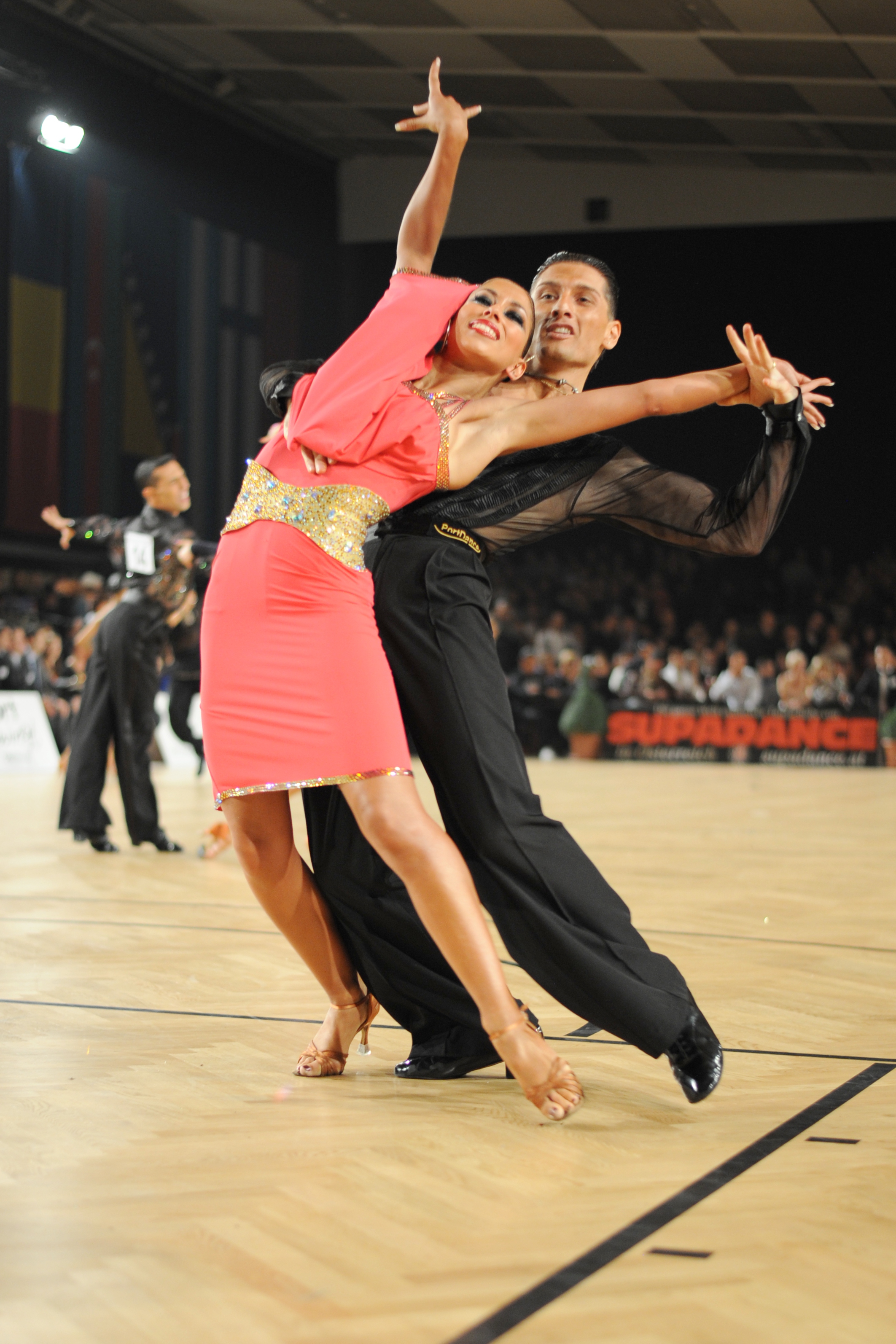Samba (ballroom dance) on:
[Wikipedia]
[Google]
[Amazon]
 The international ballroom version of samba is a lively, rhythmical dance with elements from Brazilian samba. It differs considerably from the original samba styles of Brazil; in particular, it differs from
The international ballroom version of samba is a lively, rhythmical dance with elements from Brazilian samba. It differs considerably from the original samba styles of Brazil; in particular, it differs from
Samba de Gafieira Samba de Gafieira (also called Gafieira) is a partner dance to various Brazilian samba musical rhythms. Unlike street and club forms of Brazilian samba, it evolved as a ballroom dance (''dança de salão'', literally, "salon dance").
Samba de Gafie ...
, a partner type of Samba in that country.
Technique
As a ballroom dance, the samba is a partner dance. Ballroom samba, even more than other ballroom dances, is very disconnected from the origins and evolution of the music and dance that gives it its name. Most steps are danced with a slight downward bouncing or dropping action. This action is created through the bending and straightening of the knees, with bending occurring on the beats of 1 and 2, and the straightening occurring between. However, unlike the bouncing of, e.g., Polka, there is no considerable bobbing. Also, Samba has a specific hip action, different from that in other ballroom Latin dances (Rumba and Cha-Cha-Cha). The ballroom samba is danced to music in or time. It uses several different rhythmic patterns in its figures, with cross-rhythms being a common feature. Thus, for three-step patterns, common step values (in beats) are: {, class="wikitable" , , , , , 1 , , , - , , , , , , , , - , 1 , , , , , , , - , , , , , {{3/4 , ,Music
The ballroom samba is danced under several different rhythms, including the original samba music. It is also possible to dance ballroom samba withflamenco
Flamenco (), in its strictest sense, is an art form based on the various folkloric music traditions of southern Spain, developed within the gitano subculture of the region of Andalusia, and also having historical presence in Extremadura and ...
, zouk
Zouk is a musical movement pioneered by the French Antillean band Kassav' in the early 1980s. It was originally characterized by a fast tempo (120–145 bpm), a percussion-driven rhythm and a loud horn section. The fast zouk béton of Martini ...
, and other South America
South America is a continent entirely in the Western Hemisphere and mostly in the Southern Hemisphere, with a relatively small portion in the Northern Hemisphere at the northern tip of the continent. It can also be described as the sout ...
n rhythms.
References